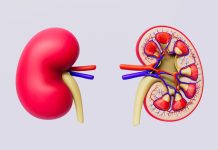
Diabetes is a condition that affects millions of people worldwide, influencing various aspects of health, including how the body heals from wounds.
The connection between diabetes and delayed wound healing is a significant concern for healthcare providers and patients alike.
This review explores why wounds heal more slowly in people with diabetes, using evidence from research studies and explaining the concepts in easy-to-understand language.
Wound healing is a complex process that involves several stages, including clotting, inflammation, tissue growth, and tissue remodeling.
In people with diabetes, this process is often slower and can lead to complications. High blood sugar levels, a hallmark of diabetes, are central to the problems encountered with wound healing.
One of the main reasons wounds heal more slowly in people with diabetes is the effect of high blood sugar on blood vessels.
Over time, elevated blood sugar levels can cause the blood vessels to narrow and harden, a condition known as atherosclerosis. This reduces blood flow to the wound area, making it harder for the body to deliver the oxygen and nutrients needed for healing.
Additionally, high blood sugar levels can impair the function of red and white blood cells. Red blood cells are responsible for carrying oxygen to the wound, while white blood cells fight infection.
When these cells don’t work correctly, wounds not only heal more slowly but are also more prone to infection.
Another factor is the impact of diabetes on the immune system. Diabetes can weaken the immune system, making it less effective at detecting and responding to infections.
This means that even minor wounds can become significant problems, as the body is less able to fight off bacteria.
Neuropathy, or nerve damage, is a common complication of diabetes that can also affect wound healing.
Neuropathy often leads to a loss of sensation, particularly in the feet, making it difficult for individuals with diabetes to notice when they have a cut or sore.
Without timely treatment, these unnoticed wounds can deteriorate and lead to severe infections.
Research studies have shown that controlling blood sugar levels is crucial for improving wound healing in people with diabetes.
Tight glucose control can help minimize the impact of diabetes on blood vessels and immune function, reducing the risk of complications.
Advanced treatments are also being explored to help wounds heal faster in people with diabetes.
These include using special dressings that provide a moist environment for the wound, applying growth factors to stimulate tissue repair, and using therapies like hyperbaric oxygen therapy to increase the oxygen supply to the wound area.
Prevention plays a vital role in managing diabetes and wound healing. People with diabetes should regularly inspect their skin for any cuts, sores, or signs of infection, especially on the feet.
Proper foot care, including wearing well-fitting shoes and keeping the feet clean and moisturized, can help prevent wounds from developing in the first place.
In conclusion, diabetes significantly impacts wound healing, leading to slower recovery times and increasing the risk of infection and complications.
Understanding the reasons behind this delayed healing process underscores the importance of managing blood sugar levels and taking preventive measures to protect the skin.
With proper care and management, individuals with diabetes can reduce their risk of wound-related complications, promoting better overall health and quality of life.
If you care about diabetes, please read studies about Vitamin D and type 2 diabetes, and to people with diabetes, some fruits are better than others.
For more information about diabetes, please see recent studies that low calorie diets may help reverse diabetes, and 5 vitamins that may prevent complication in diabetes.
Copyright © 2024 Knowridge Science Report. All rights reserved.



